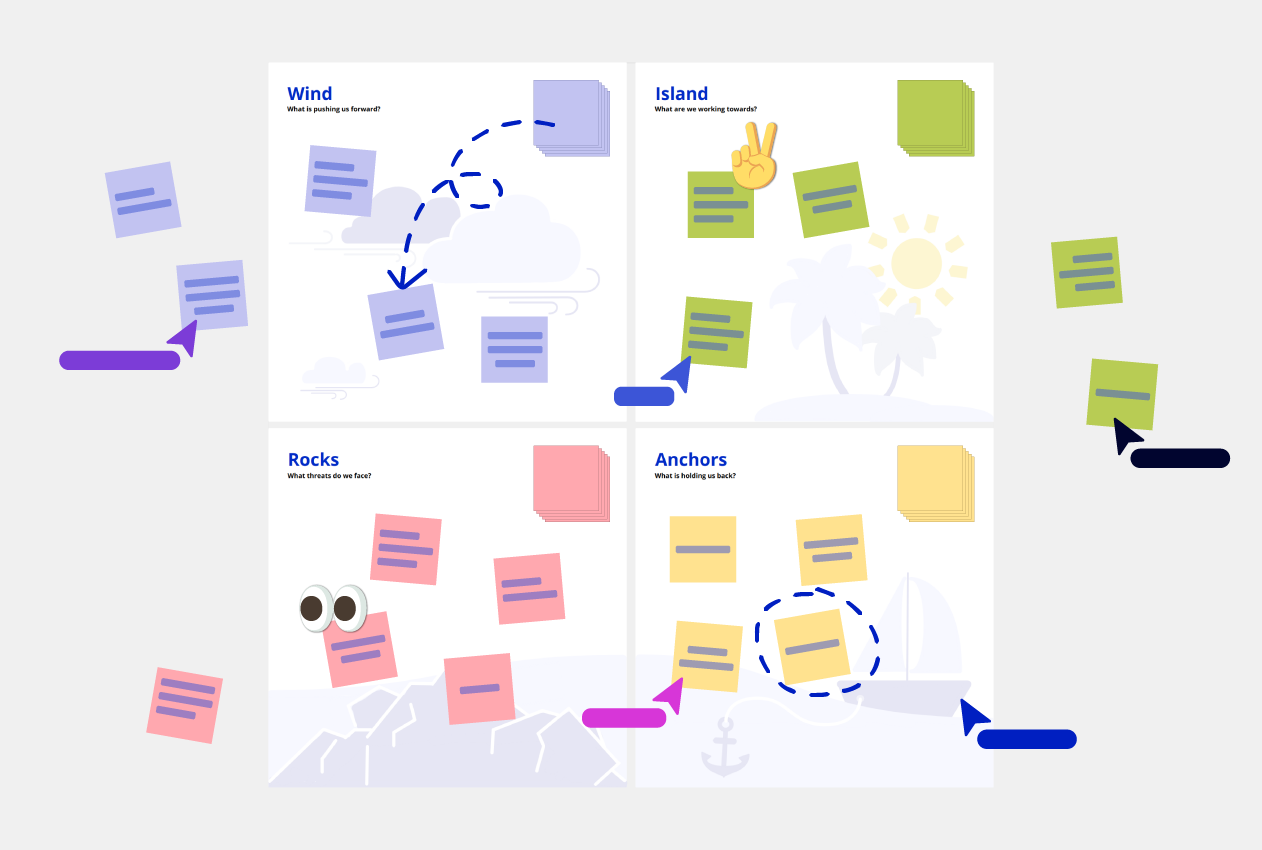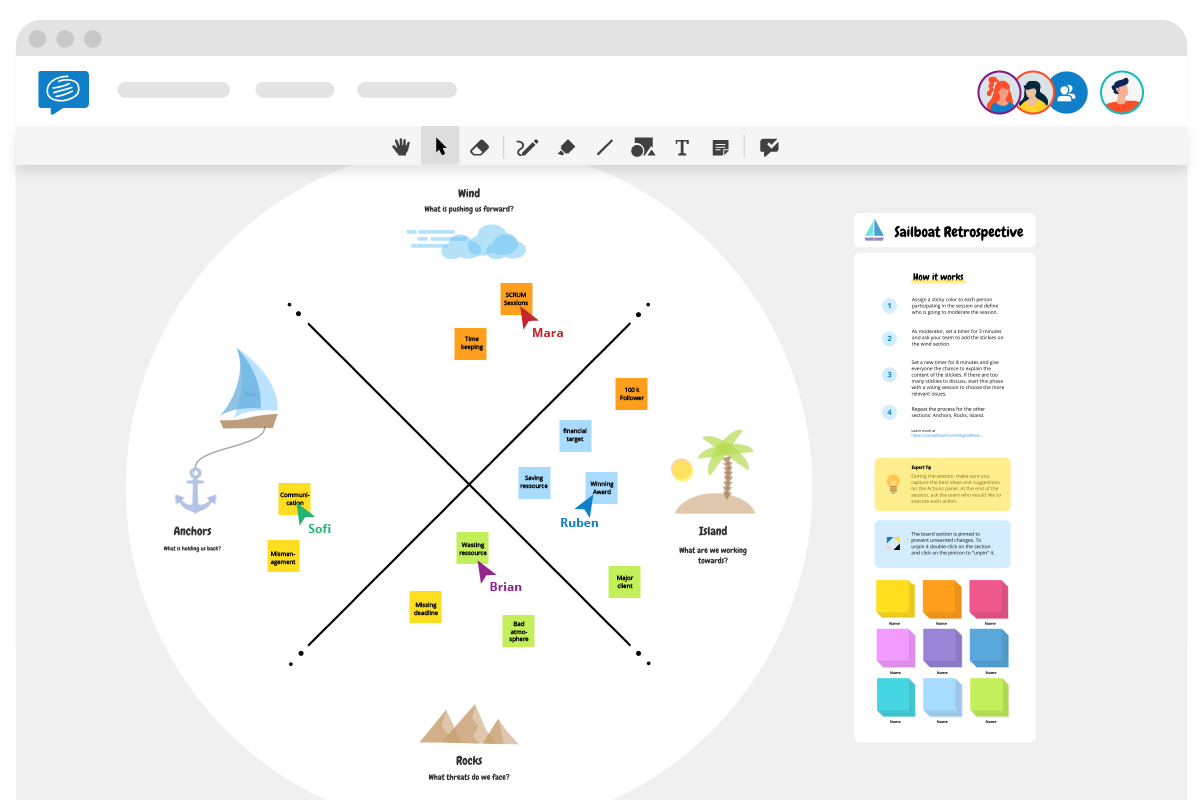Sailboat retrospective template and guide
In this article, we break down how to use the sailboat retrospective template in 4 simple steps in combination with Conceptboard’s collaborative, online whiteboard.

Retrospectives are an indispensable tool for assessing past performance and identifying areas of improvement. One way of ensuring retrospectives surface true insights is by leveraging the power of visual metaphors. This is where the Sailboat Retrospective can come in handy.
Whether your agile team is co-located or presently working remotely, a sailboat retrospective is a fun and engaging retrospective technique that ensures the entire team is aligned on the larger vision while simultaneously aware of headwinds and potential threats to project success.
In this article, we break down how to use the sailboat retrospective template in 4 simple steps in combination with Conceptboard’s collaborative, online whiteboard.
What is a sailboat retrospective?
A sailboat retrospective is a fun retrospective template whose visual nature makes it engaging for the entire team. It comprises 4 distinct sections.

Wind (Drivers)
This section identifies the driving force behind the team’s success. Was it a helpful colleague? A clear project roadmap? A supportive client? It’s also an opportunity to recognize team members who made significant contributions in the sprint or project. The idea should be to keep these tailwinds blowing.
Anchors (Bottlenecks)
Anchors are the factors that held the team back. What were the blockers that slowed down progress? It could be a lack of clarity about key objectives. Or an inability to see the bigger picture. Or maybe even a lack of motivation. This section is all about introspection and identifying what could be improved in the future.
Rocks (Threats)
Rocks are risks that can threaten the team’s future success. This section forces the team to detach themselves from the immediate present and take a longer-term view of the project. It is important to identify threats before they result in damaging
Goals (Vision)
For teams to perform and deliver results at an optimum level, it is important that the team share a set of common goals. The idea should not be to highlight operational minutiae, but rather focus on long and short-term goals. Is the goal to be the team with the quickest time to market? Or perhaps bring build products with the highest customer satisfaction score? This is an important section that drives team alignment.
How to use a sailboat retrospective template?
Conceptboard’s ready-made template makes it easy to dive into a sprint or project retrospective with your team. Simply click on the ‘+’ button and choose ‘insert template’ to access a large range of templates across business functions. Follow the steps below for a successful retrospective session.

- Once you have inserted the template, share the board with the rest of the team. Click on the share button on the top right and add email addresses of stakeholders.
- Set a stipulated time and have team members add their feedback as digital sticky notes. To make feedback easier to track, have each person choose a specific sticky note color.
- Discuss the feedback shared and identify actionables. Use comments or the pen tool to highlight important feedback
- Download the template as a PDF or high-res image. Given that Conceptboard is a cloud-based whiteboard tool, the boards are saved automatically.
Agile Retrospective templates
Unlike more traditional sprint retrospectives such as the lessons learned retrospective, visual templates such as the sailboat retrospective, the hot air balloon retrospective or starfish retrospective drive engagement and help teams focus on the big picture. The simplicity of the template means that no technical knowledge is required for stakeholders to add valuable feedback.
A retrospective is also a great idea to keep the team motivated, understand frustrations and improve processes. The collaborative nature of our visual templates acts as a forcing function to get teams ideating and solving problems together. If you are looking for additional sprint retrospective ideas, we’ve rounded up 11 retrospective ideas along with their corresponding templates you can use today.

